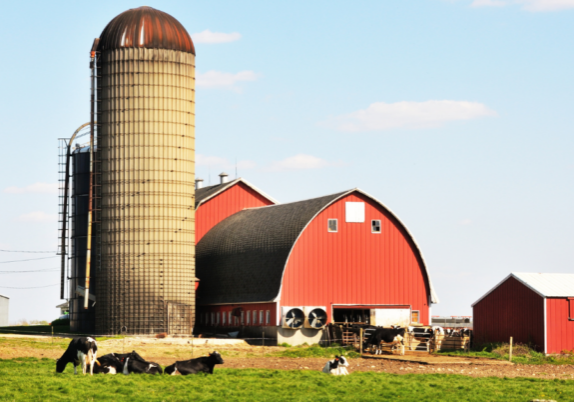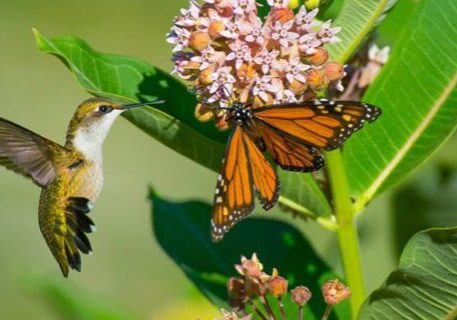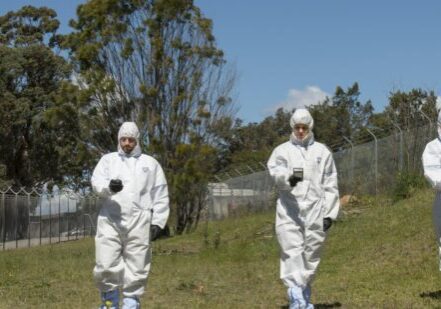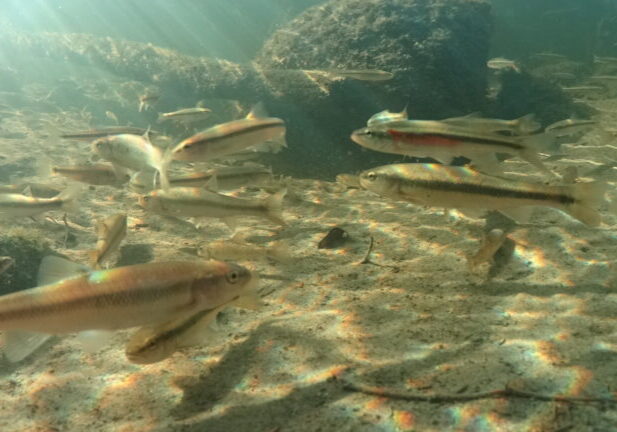Submission to Health Canada on Potential Environmental Risk Related to Squash Bee Exposure to Neonicotinoids (PSRD2021-02)
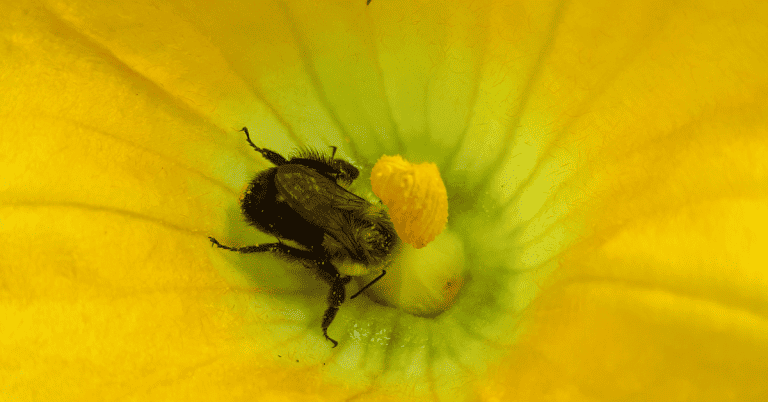
RE: Proposed Special Review Decision (PSRD2021-02), Special Reviews: Potential environmental risk related to squash bee (Peponapis pruinosa) exposure to Clothianidin, Thiamethoxam and Imidacloprid used on cucurbits
The National Farmers Union – Ontario (NFU-O) is pleased to provide our comments to Health Canada on the Potential environmental risk related to squash bee (Peponapis pruinosa) exposure to Clothianidin, Thiamethoxam and Imidacloprid used on cucurbits.
The NFU-O is an accredited farm organization representing thousands of sustainable family farmers in Ontario and has advocated for farm families across Ontario and Canada since 1969. Members work together to achieve agricultural policies that ensure dignity and income security for farm families, while protecting and enhancing rural environments for present and future generations. The NFU-O collaborates locally, nationally, and internationally to research, educate, and share effective solutions that lead to a better world for farm families and their communities.
Background
In 2014 Health Canada initiated special reviews on neonicotinoid pest control products containing clothianidin, thiamethoxam, and imidacloprid used on cucurbits such as pumpkin and squash. From that review it was determined that for certain cucurbit uses, there were unacceptable risks to Apis (honey bees) and non-Apis bees from exposure through residues in cucurbit pollen and nectar, and risk mitigation was required. This mitigation was also considered protective for soil-nesting solitary bees in cucurbit crops, including the squash bee. Risk mitigation resulting from the pollinator re-evaluations included changes to the ways the neonicotinoids can be used on cucurbit crops. Soil applications of imidacloprid and thiamethoxam on cucurbits were cancelled and foliar applications of clothianidin to cucurbits were reduced to a single pre-bloom application only. There were no changes to seed treatment uses for clothianidin, thiamethoxam and imidacloprid as risk to pollinators was considered acceptable and specific mitigation measures were introduced.
Since 2014 the use of clothianidin, thiamethoxam, and imidacloprid has been reviewed for impacts on pollinators, aquatic invertebrates, birds and other mammals, and human health. In November 2016, the Pest Management Regulatory Agency (PMRA) of Health Canada said it would ban agricultural uses of imidacloprid, an insecticide widely used on Canadian farms, due to risks to songbirds and aquatic insects. On August 15, 2018, Health Canada announced its proposed decision to phase out all outdoor agricultural and turf uses of clothianidin and all outdoor agricultural and ornamental uses of thiamethoxam over a five‐year period. This announcement was based on the results of the PMRA’s Special Reviews on Aquatic Invertebrates for Clothianidin and Thiamethoxam. By 2017 the PMRA completed its reviews of the pollinator impacts of all three neonicotinoids and proposed banning or restricting their use on crops that bees find attractive. At that time, the PMRA looked at potential mitigation strategies to see if it would be possible to restrict, rather than ban the chemicals. They concluded these were unlikely to make enough of a difference, would be difficult to implement, and could be undone through intensification of use. However, with regard to use in cucurbits, the following changes and mitigation measures have been implemented since 2014.
Overview of changes to the neonicotinoid registered uses on cucurbits over time since 2014
| Neonicotinoid | Cucurbit uses (Crop group 9: cucumber, melon, squash) At time of special review initiation in 2014 (REV2014-06) |
Changes to registration based on mitigation for cucurbit uses following pollinator re-evaluation decisions (RVD2019-04; RVD2019-05; RVD2019-06) |
Changes to registration based on mitigation for cucurbit uses following aquatic invertebrate special reviews and imidacloprid re-evaluation (SRD2021-03; SRD2021-04; RVD2021-05) |
Registration status of cucurbit uses considered for this special review (as of 31 March 2021) (incorporating registration decisions since 2014) |
| Imidacloprid | Soil application (outdoors) Soil application (greenhouse) Seed treatment |
Cancelled use (outdoor) No change (greenhouse) No change |
N/A No change Rate reduction |
No longer registered for soil use on cucurbits Registered Registered |
| Thiamethoxam | Soil application (outdoor) Seed treatment |
Cancelled use No change |
N/A No change |
No longer registered for soil use on cucurbits Registered |
| Clothianidin | Foliar application (pre-bloom only) Seed treatment |
Reduced number of applications to one pre-bloom application No change |
Rate reduction Rate reduction |
Registered Registered |
special-review-decision/2021/environmental-risk-related-to-squash-bee/document.html#t1
In 2019, Health Canada completed three pollinator-focused re-evaluations and published its decisions. These re-evaluations were conducted according to the Guidance for Assessing Pesticide Risks to Bees, and assessed the registered uses of all three neonicotinoids, including foliar, seed treatment, and soil applications. The current pollinator re-evaluations by Health Canada resulted in the following findings as related to squash bees:
• The mitigation measures implemented through the re-evaluation are protective of squash bees.
• The potential environmental risks to Peponapis pruinosa (squash bee) through exposure to clothianidin, thiamethoxam and imidacloprid used on cucurbits are considered acceptable when used according to the current conditions of use and the mitigation measures already implemented (table above).
• On this basis, Health Canada’s Pest Management Regulatory Agency is proposing continued registration of clothianidin, thiamethoxam and imidacloprid products for sale and use on cucurbits in Canada.
• No further mitigation measures are proposed.
Neonicotinoids
Clothianidin, thiamethoxam and imidacloprid are systemic neonicotinoid insecticides registered for commercial use in Canada on a variety of agricultural crops, including cucurbits. When thiamethoxam and clothianidin are applied as a foliar spray, residues can be taken up by the plant and move throughout the plant into pollen and nectar. This can happen even when application occurs when no blooms are present. If a product is not applied during bloom, but is applied either pre-bloom or post-bloom, residues can be taken up by the plant, remain in the plant, and then when blooms are formed, residues may move into pollen and nectar. Typically, the closer to the blooming period that the product is applied, the greater the residues levels in pollen and nectar. For example, pre-bloom application close to bloom time (e.g., 1 – 2 weeks pre-bloom) may result in fairly high residues in pollen and nectar.
A number of studies (Cimino et al. 2016) have found that neonicotinoids are persistent and found in soil, dust, wetlands, ground water, non-target plants and vertebrate prey, and foods common to the American diet. And, unlike most other pesticides, neonicotinoids cannot be washed off of food prior to consumption.
Squash Bees
The squash bee, Peponapis pruinosa, is a soil-nesting, solitary species found across most of North and South America. This is the only squash bee species present in Canada and is widespread in southern Ontario. These bees are solely dependent upon cucurbit crops for pollen and nectar. They are well adapted for collection of the large pollen grains of cucurbits, and their diurnal flight period is synchronized with the opening of the flowers. Each cucurbit blossom lasts only one day, opening early in the morning and wilting by early afternoon. Most of the squash bee’s foraging is done early in the morning within a couple of hours of sunrise before honey bees would typically begin foraging.
Female squash bees make nests in the soil in large groupings in and around cucurbit crop plantings or nearby nesting sites. They produce only one generation per year. Nests of the squash bee usually have four to six cells containing eggs and cucurbit pollen mixed with nectar. They are constructed 12-22 cm below the soil surface. Male squash bees and female bees that have not yet nested sleep inside the closed flower overnight and chew their way out early the next morning to meet up with female squash bees and to feed. The adult bees emerge from their soil nests from late July to August, with the males emerging before the females. The bees emerge when cucurbit crops are in bloom. Approximately two to three weeks after emergence, they build nests until early September. The eggs laid in the soil nests develop from egg to larvae to pre-pupae in a two week period. Squash bees overwinter as a pre-pupae in the ground and then pupate the following summer from mid-June to mid-July. The lifecycle is then repeated when the adult bees emerge from late July to August.
NFU-O questions acceptable exposure risk to clothianidin, thiamethoxam and imidacloprid used on cucurbits when used according to the current conditions of use
The NFU-O questions the decision to permit the use of clothianidin, thiamethoxam and imidacloprid according to the current conditions of use, as we do not see evidence that there will be effective monitoring for compliance.
The PMRA’s proposed decision which was published in 2018 would have introduced a five-year phase-out leading up to a ban on the use of neonicotinoids. In our view, this was a step in the right direction to promote the health and survival of pollinators (including squash bees), aquatic insects and the birds that feed on those insects. The proposed decision was based on the PMRA’s conclusion that mitigation measures were unlikely to make enough of a difference, would be difficult to implement, and could be undone through intensification of use. We disagree with the re-evaluation decision which was released in 2019 which reversed the proposed ban, but instead implemented mitigation measures.
NFU-O questions the impacts to squash bees from the continued use of seed treatments and indoor application of imidacloprid and foliar spraying of clothianidin
Soil application of Imidacloprid in outdoor agricultural use has been cancelled, due to posing the highest risk to Apis and non-Apis bee populations, however it is still permitted for indoor (greenhouse) growing of cucurbits. Standard cucurbits have separate male and female flowers, which require a pollinator to bring pollen from a male flower over to a female flower. We fail to see how continued use of Imidacloprid in greenhouses will not negatively impact squash bee populations, both through direct exposure indoors, or populations nesting nearby greenhouse structures.
Similarly, studies used by Health Canada in their special review of the impacts of neonicotinoids on squash bees showed that thiamethoxam soil residues increased over time with repeated planting of thiamethoxam treated seed. Therefore, the NFU-O questions how the persistent accumulation of neonicotinoids in the soil from crops planted with treated seed will affect the nests and survival of squash bee larvae in the long-term, as well as how exposure to increasing accumulations of neonicotinoids in the pollen and nectar collected from the flowers will impact squash bees in the long-term.
NFU-O calls for precaution and transition to ecological farming
The NFU-O has been a leader among farm organizations by calling on governments to use the precautionary approach when regulating pesticides. Hand in hand with a precautionary approach to regulating pesticides, the NFU has promoted public funding for research into alternative methods to manage pests, improvements to data collection and monitoring so policy‐makers have good evidence to support their decision‐making, and education for and by farmers to adopt more ecologically friendly farming practices.
The NFU-O urges Health Canada to recognize and promote agronomic alternatives to the use of chemical pesticides and to support agricultural research, education and public policy measures to reduce pesticide use in Canadian agriculture.
Sincerely,
Don Ciparis
President, National Farmers Union – Ontario
References:
Andria M. Cimino, Abee L. Boyles, Kristina A. Thayer, and Melissa J. Perry (2016). Effects of Neonicotinoid Pesticide Exposure on Human Health: A Systematic Review, Environmental Health Perspectives (2016). https://ehp.niehs.nih.gov/doi/10.1289/EHP515
Cathy Holtslander (2018). Health Canada proposes 5-year phase out of neonicotinoids. Union Farmer Newsletter. https://www.nfu.ca/wp-content/uploads/2018/09/UF-NEWSLETTER-SEPT-OCTOBER-2018.pdf
Roger Williams, Dan Fickle, Andrew P. Michel, and Karen Goodell (2009). Pumpkin Pollinator: Biology and Behavior of the Squash Bee. Department of Entomology, OARDC/The Ohio State University. http://icpbees.org/wp-content/uploads/2016/06/Ohio-State-Fact-Sheet-on-Peponapis.pdf
